Note: This is NOT my Gold Special, even though I've already reached gold. The Gold Special will be my next plane, the Boom Overture.
Credits
- DC-10: in auto-credit
I really like this livery
The colours go perfectly together, and despite being used in the 1980s, the livery looks like it'd still look suitable on a modern airliner like the 787. It was designed by an artist after all.
Much of the effort put in here was dedicated to making players able to recreate United Flight 232 as accurately as possible, though it's not fully realistic. (The instructions are in-game.)
Happy flying, and survive!

Night flight (RCP Airways 727 Triplane in background)
long description ahead, get a drink!
The Impossible Landing: The Crash of United Airlines Flight 232
Adapted from this article.
Before the Accident
It all started out like any other flight. 285 passengers and 11 crew boarded United Airlines Flight 232 to Chicago, Illinois and Philadelphia on a DC-10, a plane well-known for its unusual tail-mounted engine and sketchy safety record. At that time, United Airlines had a special offer that let kids under 14 fly for just 1 penny, and as a result, 54 of the passengers were children.
The 18-year-old DC-10 took off and began its cruise. The weather and schedule were perfect; there was nothing to worry about. But then, as flight 232 turned right to head to Chicago, disaster struck.
The Accident
Without warning, the No.2 (tail-mounted) engine's fan blade exploded and parts broke out of the engine casing, piercing through the stabilisers and elevators at hundreds of kilometers an hour.
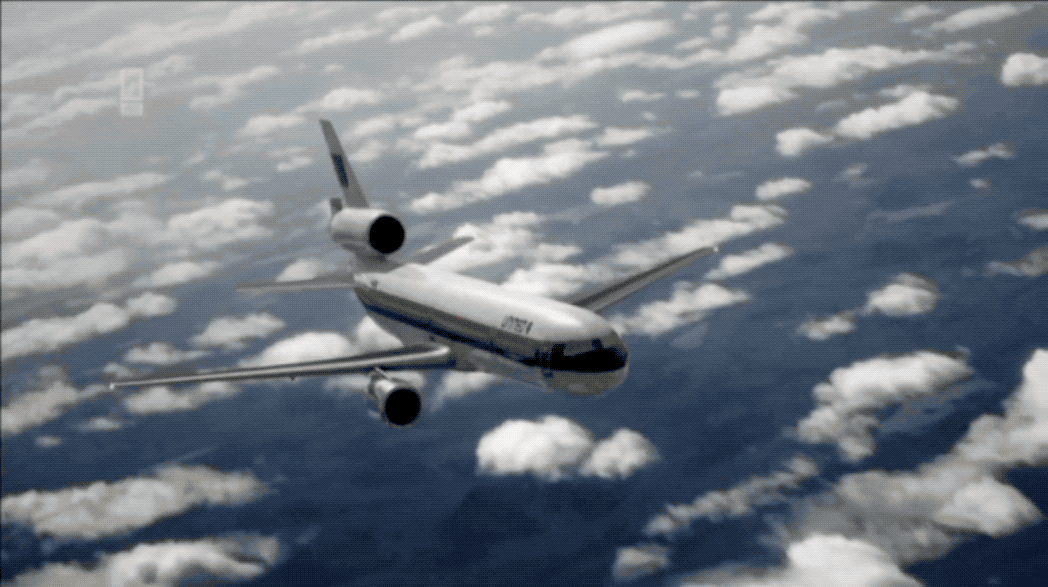
One of the pieces managed to strike the point where all three of the DC-10's hydraulic lines, located on the horizontal stabiliser, intersected. As you can imagine, the hydraulic systems were basically goners.
It's important to note that because the DC-10 is so big, all the control surfaces, such as the elevators, rudder, ailerons, flaps and landing gear, are controlled by hydraulic fluid. Hence, once the hydraulics were rendered inoperable, the plane became pretty much uncontrollable. To make matters worse, the plane was banking right during the loss of control, making the bank become greater.
The captain, Captain Haynes, immediately reduced power on the left engine, and with the right engine producing more thrust than the left one, the plane rolled back to the left.
Without any pitch controls, the plane entered a phugoid cycle, making stability impossible.
Steering was also extremely difficult (try using the differential thrust in-game and you'll see what I mean). The Minneapolis controller suggested that they divert to Des Moines, but the plane drifted off-course right after. The only airport on their flight path was in Sioux City, and the crew immediately decided to divert there.
Because the plane kept on trying to make right turns, the crew decided to make right turns only, looping nearly full circle just to head a few degrees left.
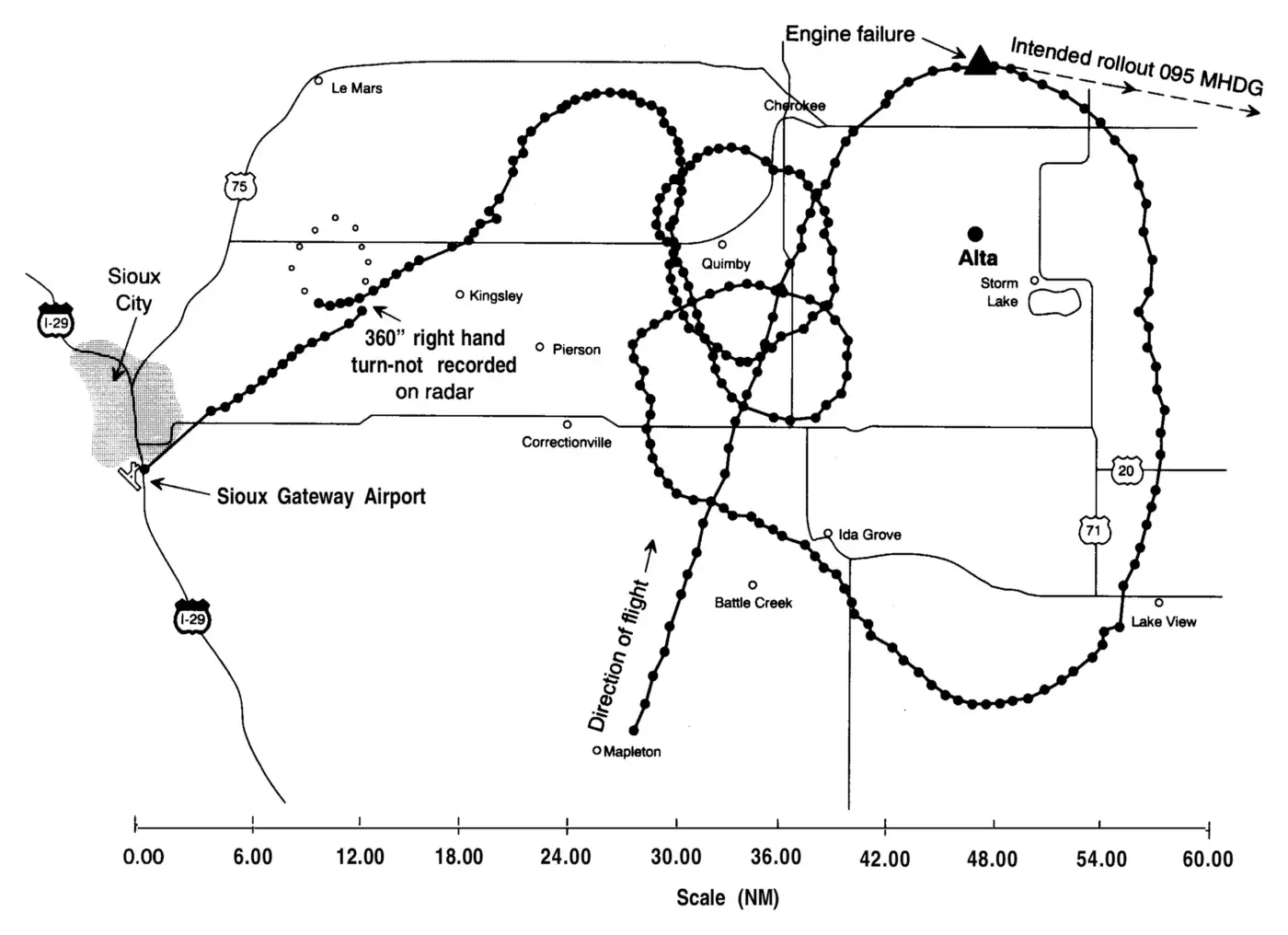
It just happened that there was a DC-10 training captain on board, Denny Fitch, who went to the cockpit to help the three crew members. He was put in charge of controlling the throttles, allowing the rest to handle everything else.
A final 360-degree turn was made, the landing gear was extended, and the cabin crew prepared the passengers for a crash landing.
Controller: “United 232 heavy, the wind’s currently 360 at 11. You’re cleared to land on any runway.”
Captain Haynes: “Roger. You want to be particular and make it a runway, huh?”
The controller realised that flight 232 was lining up for runway 22, instead of the planned runway 31. The issue was that runway 22 was a closed runway, and as a result all the fire engines were parked right in the middle of it. All the vehicles were immediately scrambled off the runway.
With the slats and flaps, which were powered by hydraulics, unusable, the crew had to land extremely fast, at a speed of 210 knots (389km/h). Additionally, any tiny upsets the plane got right before landing would not be recoverable, and the plane would crash. Unfortunately, that exact thing happened, and the plane suddenly banked right. Denny Fitch tried to level the plane at the last moment, but it was futile.
The Crash

I can't really explain it, but land the plane at 200 knots and banking right and you'll see what roughly happened, except that aircraft in real life are much easier to break apart than those in SimplePlanes.
Inside the plane, babies were ripped from their parents' arms, entire rows of seats were thrown out of the plane, and pretty much everyone in business class and the near-tail section instantly perished. However, those sitting in the middle, where the wings were, survived. (Now you know where in the plane you can best survive a plane crash!) The cockpit section with all four pilots stayed intact and they all survived, albeit with serious injuries.
Even though the crash was over, the nightmare was not. More people died from smoke inhalation as fires started throughout the wreckage.

Despite the horrific crash, a total of 185 people had survived, more than half of the total passengers on board. The landing was soon regarded as a miracle, considering that the crew had put a plane with zero controls onto the ground, with so many passengers living to tell the tale.
The pilots all made full recoveries and went on to become famous for the outstanding airmanship that they displayed on flight 232. No other pilot that tried a simulation of the accident was able to keep the plane in the air for as long as they did.
Captain Haynes credited the crew's practicing of crew resource management (CRM), where crewmembers' opinions and teamwork are encouraged, to them being able to make it through the emergency.
"…the preparation that paid off for the crew was something … called cockpit resource management… Up until 1980, we kind of worked on the concept that the captain was THE authority on the aircraft. What he said, goes. And we lost a few airplanes because of that. Sometimes the captain isn't as smart as we thought he was. And we would listen to him, and do what he said, and we wouldn't know what he's talking about. And we had 103 years of flying experience there in the cockpit, trying to get that airplane on the ground, not one minute of which we had actually practiced, any one of us. So why would I know more about getting that airplane on the ground under those conditions than the other three. So if I hadn't used CRM, if we had not let everybody put their input in, it's a cinch we wouldn't have made it."
- Haynes during a lecture
Cause of the Accident
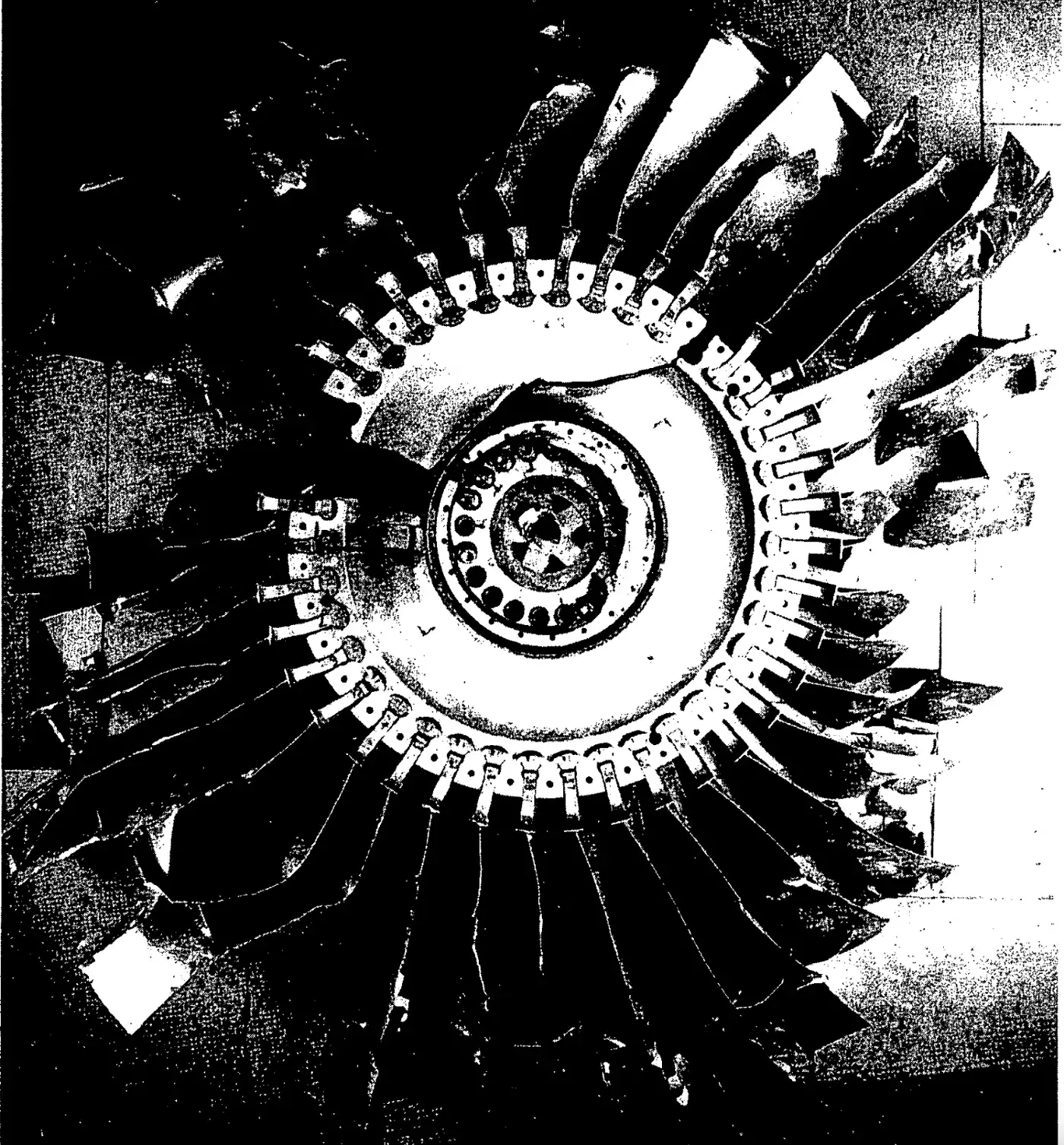
The fan blade that started the entire incident, now recovered and reassembled.
The No.2 engine's fan disk that broke had been suffering from a large amount of metal fatigue, could not take the high stresses anymore on flight 232, and broke into 2 inside the engine casing. This kind of metal fatigue is caused by the metal used to make the part being mixed with other chemicals and thus becoming impure, causing the metal's durability to greatly decrease.
In the case of this DC-10, a titanium ingot used had a tiny impurity of nitrogen in it, and it was not detected by inspectors before being made into various fan blades, one of them being fitted onto this plane. During the 18 years that the plane was in service, the defect was somehow not noticed by any inspectors and a crack in the fan blade was able to grow up to 3cm long, causing the breakage.
At the time of this incident, regulations surrounding fan blade production and inspection had already been much stricter, but since the plane's fan blade was built in 1970, it did not help.
To prevent another scenario where all the hydraulic lines were cut, McDonnell Douglas, followed shortly thereafter by other major manufacturers, added shutoff valves to all aircraft hydraulic systems so that if a breach occurs, the valves will automatically close and prevent the hydraulic fluid from escaping. A warning will then sound in the cockpit to inform the pilots that the shutoff valves are engaged. There has not been another accident like this one ever since (although a DHL A300 lost all its hydraulics in 2000 when a missile hit it).
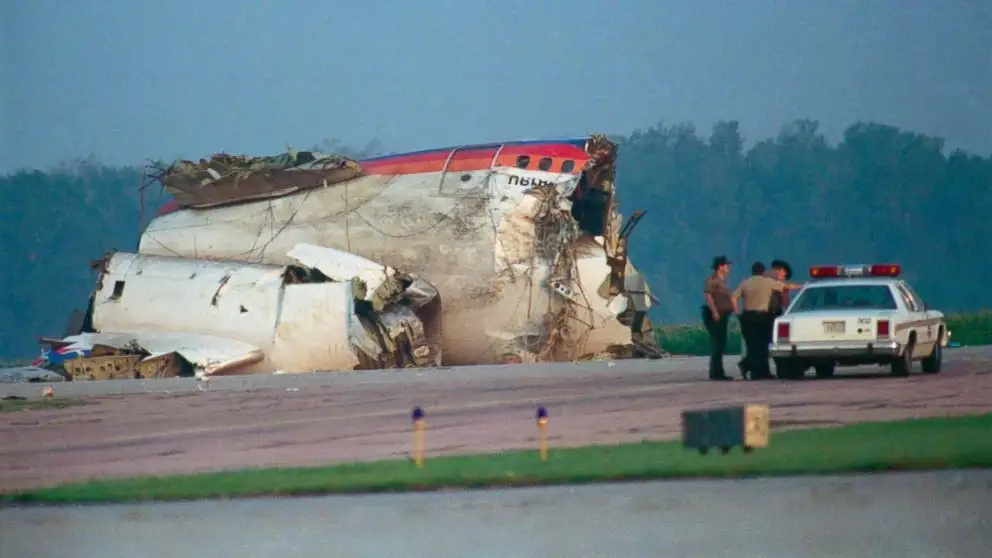
If you reached the end, thank you so much for reading! I put in a lot of effort into every description I make.
Full List of My Builds (click on this)
Specifications
Spotlights
- RicardoACE 2.3 years ago
- ayou2005 2.9 years ago
- LonelyAustrianUhlan 2.9 years ago
- Brololxd 2.9 years ago
- Gabriel747 2.9 years ago
General Characteristics
- Predecessor DC 10 -30
- Successors 25 airplane(s) +731 bonus
- Created On Mac
- Wingspan 165.4ft (50.4m)
- Length 181.7ft (55.4m)
- Height 59.0ft (18.0m)
- Empty Weight N/A
- Loaded Weight 130,347lbs (59,124kg)
Performance
- Power/Weight Ratio 1.168
- Horse Power/Weight Ratio 0.034
- Wing Loading 27.7lbs/ft2 (135.4kg/m2)
- Wing Area 4,700.5ft2 (436.7m2)
- Drag Points 10502
Parts
- Number of Parts 598
- Control Surfaces 9
- Performance Cost 3,526



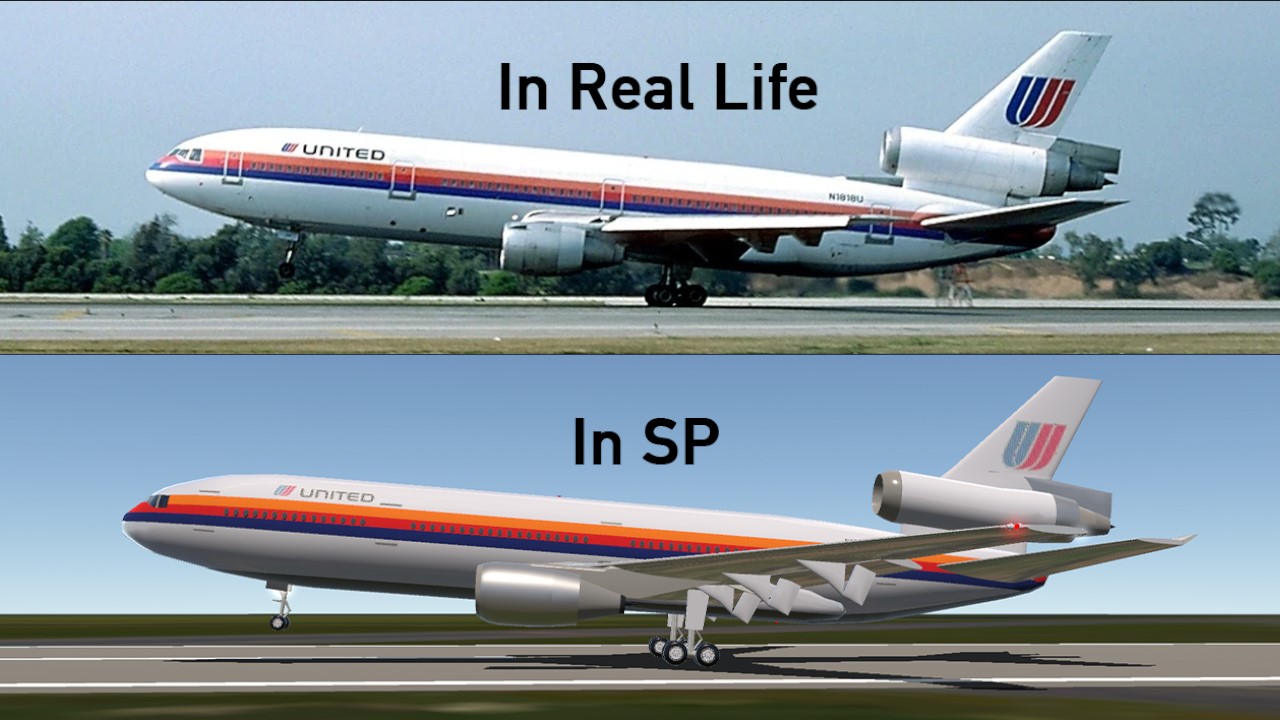
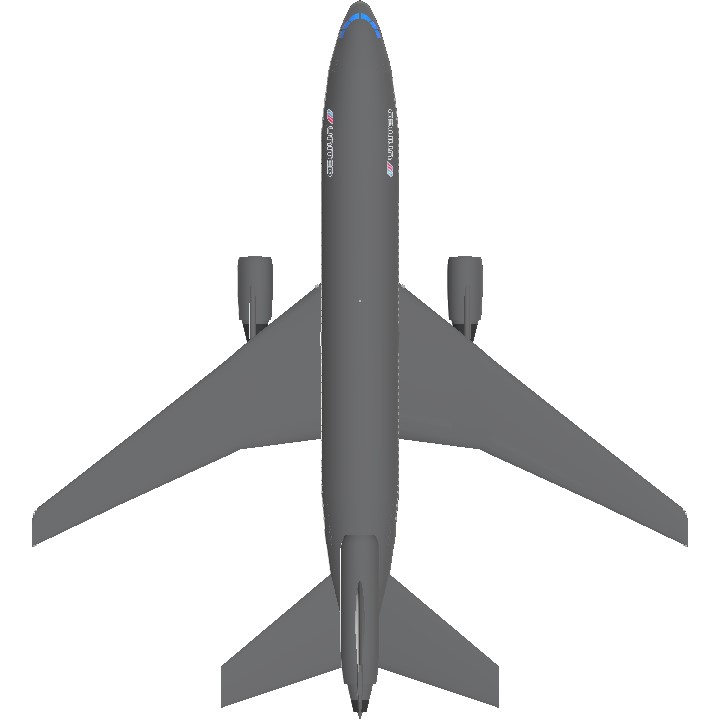
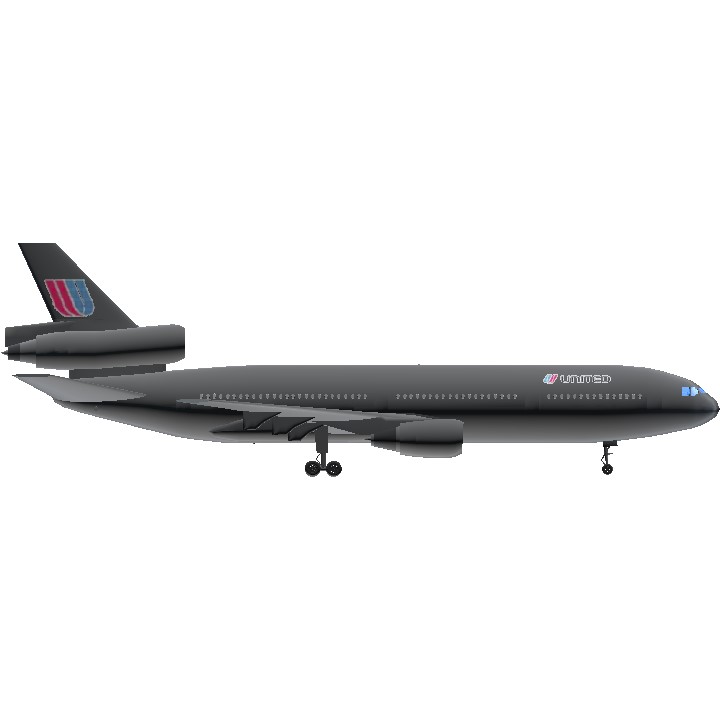

my sis recreated this crash with ur plane, it was really cool to see, but yeah sad that alot of people died but more survived and that's good
@RepublicOfCursedPlanes United Airlines flight 232
You can add a cabin that would be great
Bro that's really bad crash
@RepublicOfCursedPlanes
I'm gonna MAKE PAN AM Livery with this one🗣️🔥🗣️🗣️🗣️🗣️🔥
@TheAviator77 next thing you know there’s gonna be a American dc-10-10 (aal191)
Whoa.. you can recreate UAL232?
@TheAviator77 we do not care
It's kinda funny but also sad my grandma remembers watching flight 232 leave the twin cities area after her an my grandpa just got there then seeing what happened to the plane hours later an they were just getting my grandpa's brother
LEFT LEFT LEFT LEFT
I can't pull em off if I do that's whats turning you
Rapidly Whoop whoop pull up
EVERYONE STAY IN BRACE GO-
Link of the map
@hellothere28 press FireGuns
how did you recreate the incident on mobile?, we don't have space
@Kiwii15 you can find out from my tutorial
how did u make that united logo?
I made a little step to blow out the fire. If you are interested, you can download it. And the instrument will be damaged just after the installation. There are many details
Back al, LEFT THROTTLE, LEFLEFLEFLEFLEFLEFLEFLEFLEF WHOOP WHOOP PULL UP WHOOP PULL UP WHOOP WHOOP PULL UP
Amazing plane, I love how you made the plane so users can simulate the incident in game with instructions! The description you gave here was also amazing and detailed, I absolutely loved reading it! 100/10 from me!
Great description man! Explains every detail perfectly! I wish more creators put as much time and effort into their description as they do their plane!
@ApplePies84 oh I forgot thanks
great! I hope you can do one on flight 123
@RepublicOfCursedPlanes add this to build list
@Legomaster0418 i plan to explain how to do that in my upcoming livery tutorial
This deserves more updoots honestly
UA232